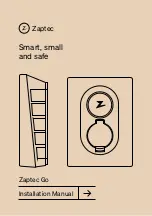
WARNING!
•
A lap belt worn too high can increase the risk of
internal injury in a collision. The belt forces won’t
be at the strong hip and pelvic bones, but across your
abdomen. Always wear the lap belt as low as pos-
sible and keep it snug.
•
A twisted belt can’t do its job as well. In a collision
it could even cut into you. Be sure the belt is straight.
If you can’t straighten a belt in your vehicle, take it
to your dealer and have it fixed.
5. Position the shoulder belt on your chest so that it is
comfortable and not resting on your neck. The retractor
will withdraw any slack in the belt.
6. To release the belt, push the red button on the buckle.
The belt will automatically retract to its stowed position.
If necessary, slide the latch plate down the webbing to
allow the belt to retract fully.
WARNING!
A frayed or torn belt could rip apart in a collision
and leave you with no protection. Inspect the belt
system periodically, checking for cuts, frays, or loose
parts. Damaged parts must be replaced immediately.
Do not disassemble or modify the system. Seat belt
assemblies must be replaced after a collision if they
have been damaged (bent retractor, torn webbing,
etc.).
Rear Center Lap/Shoulder Belt Retractor Lock-Out
This feature is designed to lock the retractor whenever
the 60% rear seat back is not fully latched. This prevents
someone from wearing the rear center lap/shoulder belt
when the rear seat back is not fully latched.
NOTE:
•
If the rear center lap/shoulder belt can not be pulled
out, check that the rear seat back is fully latched.
•
If the rear seat back is properly latched and the rear
center lap/shoulder belt still can not be pulled out, the
Automatic-Locking Retractor (ALR) system may be
THINGS TO KNOW BEFORE STARTING YOUR VEHICLE
31
2
Summary of Contents for 2006 LX Magnum SRT8
Page 2: ......
Page 5: ...INTRODUCTION 5 1...
Page 8: ......
Page 82: ...82 UNDERSTANDING THE FEATURES OF YOUR VEHICLE...
Page 83: ...UNDERSTANDING THE FEATURES OF YOUR VEHICLE 83 3...
Page 84: ...84 UNDERSTANDING THE FEATURES OF YOUR VEHICLE...
Page 132: ...INSTRUMENTS AND CONTROLS 132 UNDERSTANDING YOUR INSTRUMENT PANEL...
Page 133: ...INSTRUMENT CLUSTER UNDERSTANDING YOUR INSTRUMENT PANEL 133 4...
Page 182: ...182 UNDERSTANDING YOUR INSTRUMENT PANEL...
Page 186: ...Operating Tips 186 UNDERSTANDING YOUR INSTRUMENT PANEL...
Page 214: ...214 STARTING AND OPERATING...
Page 248: ......
Page 263: ...6 1L ENGINE 6 1L Engine Compartment MAINTAINING YOUR VEHICLE 263 7...
Page 304: ......
Page 320: ......
Page 329: ...INDEX 10...
Page 343: ...NOTES...
Page 344: ...NOTES...
















































